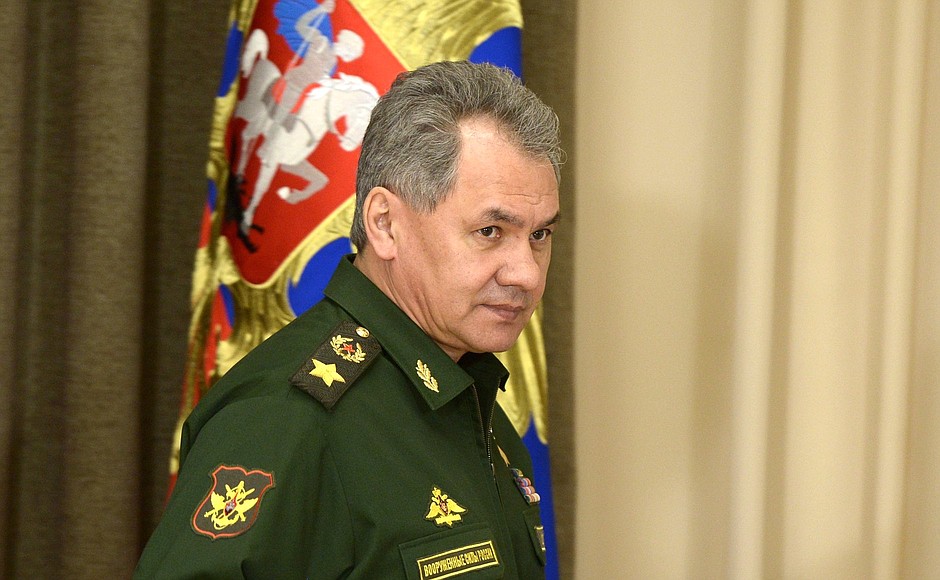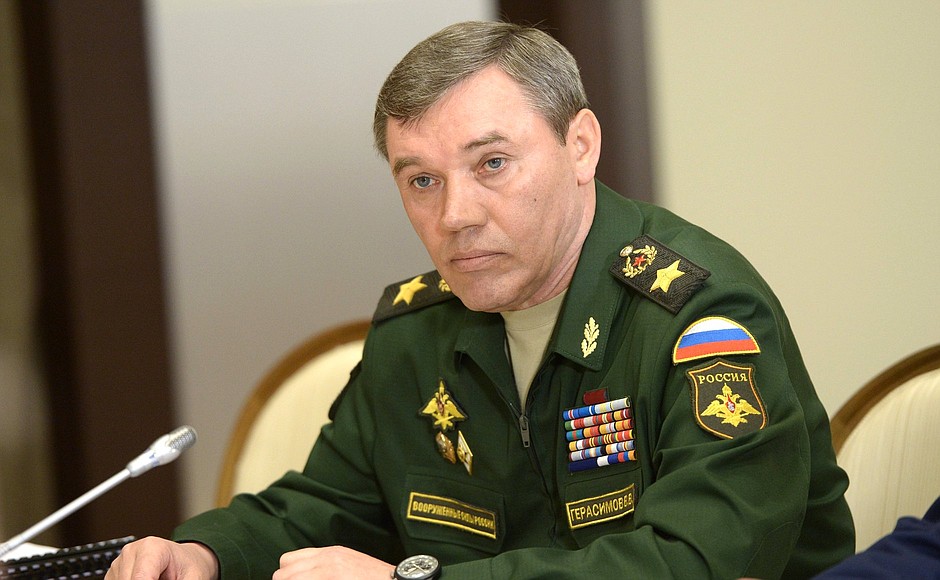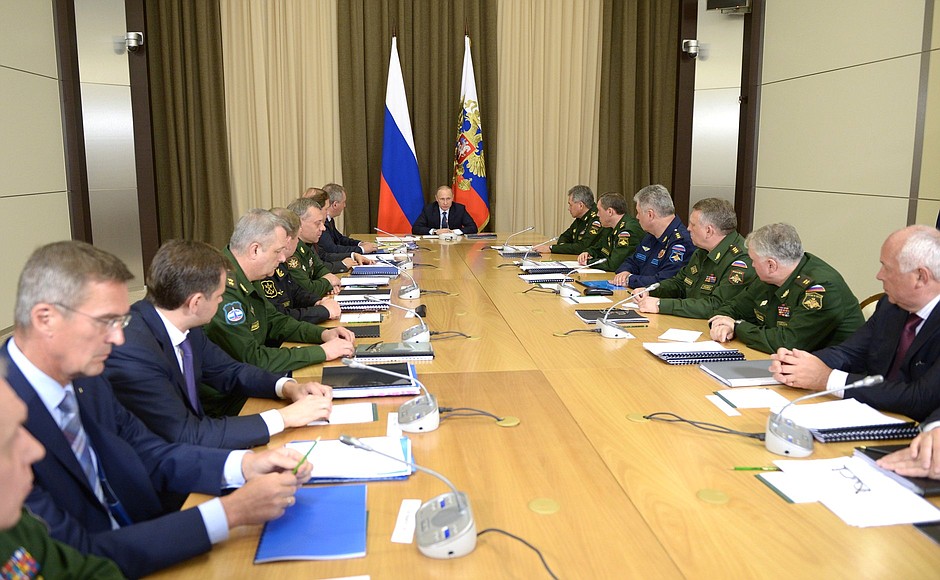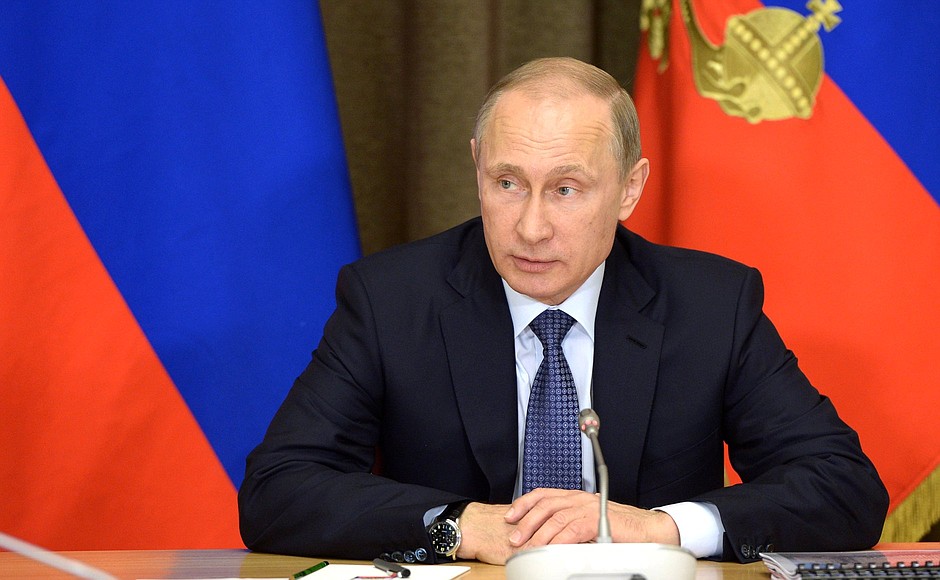President of Russia Vladimir Putin: Colleagues,
This is our fifth series of meetings with Defence Ministry leadership and military-industrial complex executives to consider the development of the Armed Forces and corresponding branches of industry.
I believe we all feel that these meetings are not a waste of time. They give us an opportunity to sum up the work done in the previous six months and set targets for the next six months.
Before we proceed to the matter at hand, I would like to thank the Defence Minister and all those involved in preparing the parade for the 70th anniversary of Victory in the Great Patriotic War and everyone who took part in it. I want to express my gratitude and to ask you, Mr Shoigu, to pass this on to all servicemen who took part in the parade and its preparations.
For two years now, we have been meeting in a similar format to discuss the priorities of military construction and the implementation of the state defence order. Today we will sum up the work done to execute the main instructions and consider our priority tasks.
Last year we launched the optimisation of the makeup and structure of the Russian Army and the armament systems. We are moving in several directions simultaneously, and we are making progress in each one.
Thus, the creation of a joint strategic command on the basis of the Northern Fleet increased security in the Arctic and helped upgrade the military infrastructure in a region that is of great importance to Russia.
The creation of new standardised samples of armaments and combat and special equipment will make it possible to reduce their crews by a third. This, in turn, will reduce the cost of the entire re-armament programme, including a 25 percent cut in the maintenance costs – not only production, but maintenance as well.
The implementation of the strategy for the Armed Forces’ automated control system, which is designed until 2025, will steadily enhance troop management efficiency.
I would like to stress that the state defence order is being implemented almost fully: during the single military products acceptance day on April 17, we saw yet again that these efforts are acquiring a certain rhythm and proceeding without the usual end-of-the-year rush.
In the first four months of this year, almost one third of all airplanes, helicopters and unmanned craft and missile complexes have been delivered. Armoured tank armaments and artillery systems are being upgraded. The troops are receiving modern strategic missile complexes, surface craft and submarines.
By the end of the year, we must meet the targets in modern armaments and military equipment. Their share in the ground and air forces should reach 32 and 33 percent accordingly, 40 percent in airborne forces and more than half in the Navy and Aerospace Defence Forces.
Overall, due execution of my instructions by the Defence Ministry, appropriate agencies and defence industry organisations have made it possible to enhance the pace of army and navy re-armament. Our priority task now is to maintain this pace, promptly resolve all joint issues and strictly comply with all the deadlines.
In addition, I would like to ask you to ensure regular control over issues pertaining to ensuring the necessary infrastructure for new and upgraded equipment and armaments, as well as personnel training and re-training.
Another important job is the implementation of the import replacement programme, including import from Ukrainian facilities and certain NATO and European Union states. Specifically those that, for some reason, mainly of a political nature, are curtailing cooperation with us in this area – to their own detriment, in fact.
This will make it possible to raise the standing of our production facilities and reduce their dependence on suppliers. In the final count, import replacement in the area we are concerned with today is the proper thing to do and it is good we have set ourselves this task and started moving in this direction. Obviously, this takes both time and additional funds.
Speaking of funds, as you may know, all the issues pertaining to the allocation of additional funding have been resolved. We only need to make sure everything is done on time, without delay, so that we can meet the approved cost estimates, among other things.
I would like to reiterate the need to ensure the high quality of the new products, including within the framework of the import replacement efforts. This is a unique opportunity as we proceed with this programme, to create everything using only the latest technological, technical and research developments.
This would be the same as what we did here in Sochi when we were preparing for the Olympics – we took only the very best. As a result, in some aspects of the preparations, the events in Sochi exceeded all expectations. According to international experts, some components were better than world analogues.
We can and must do the same in the defence industry. These components should be better than their analogues in the world.
Let us proceed to our work.
<…>



